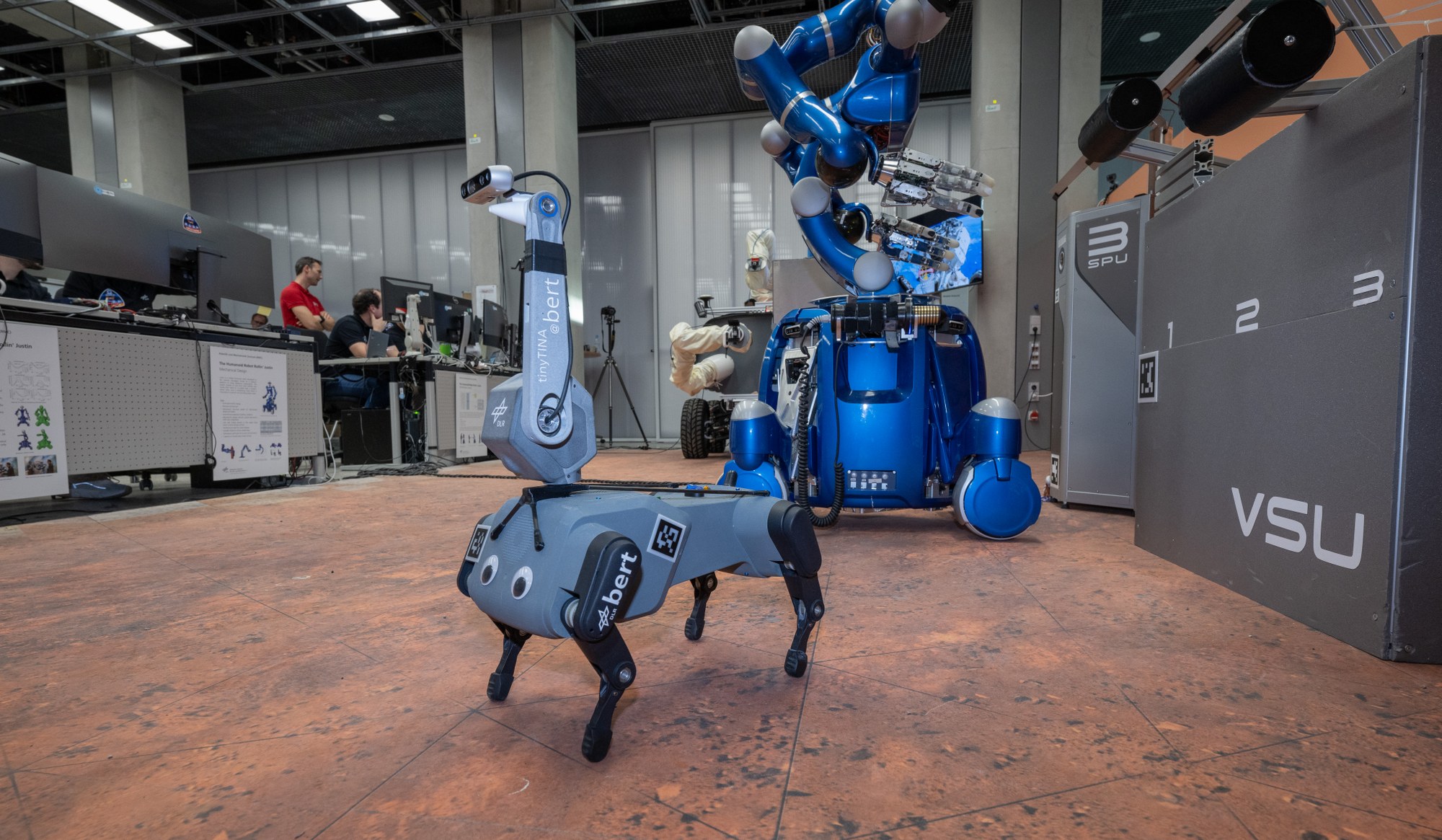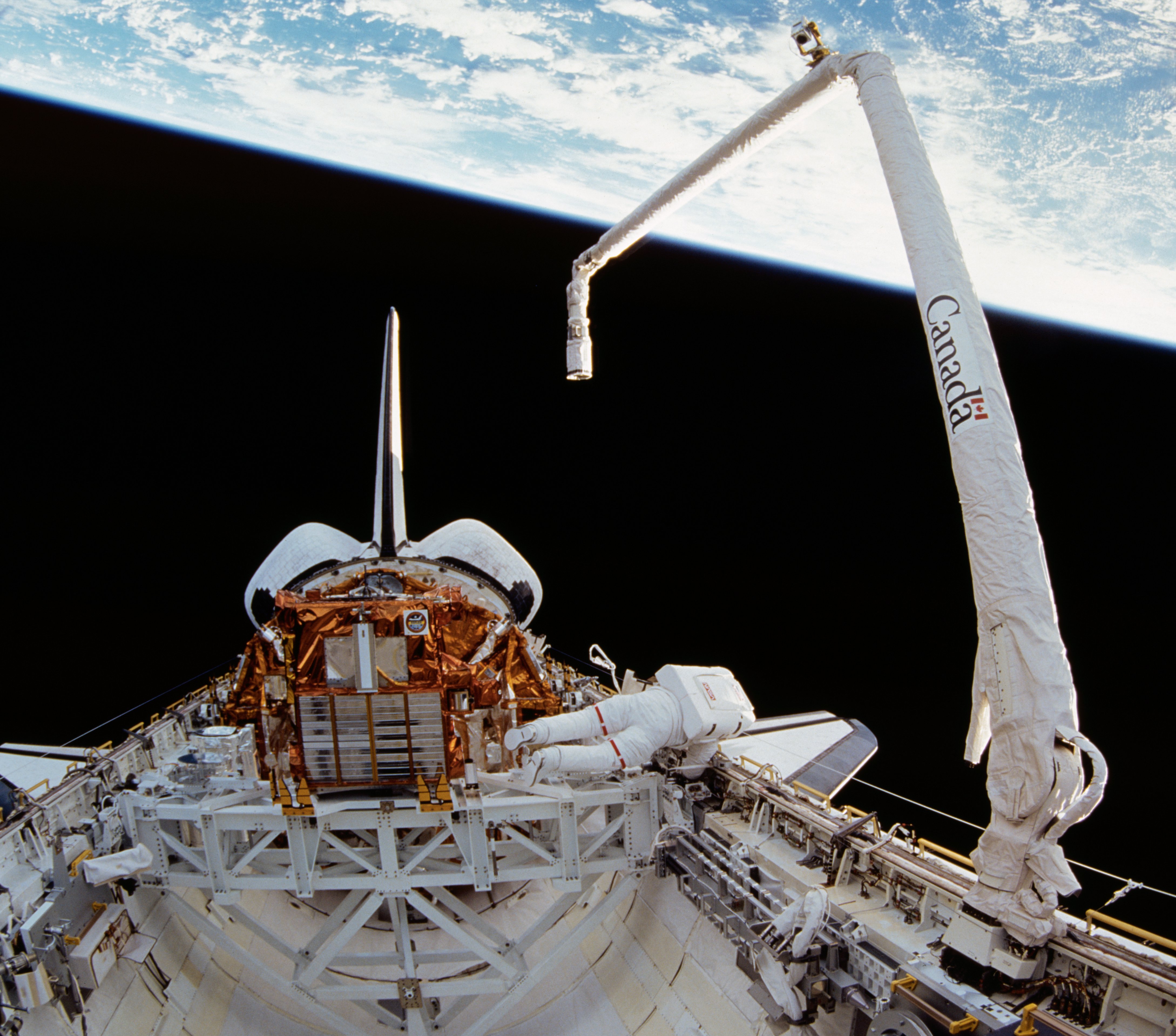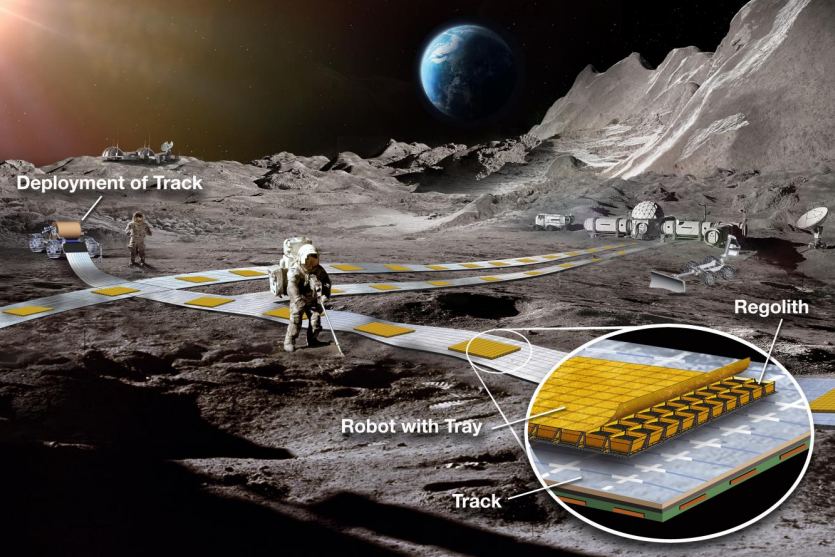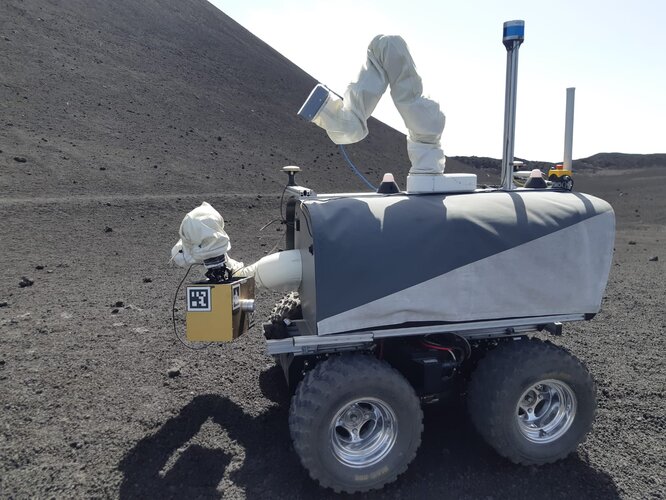Lunar exploration equipment at any future lunar base is in danger from debris blasted toward it by subsequent lunar landers. This danger isn’t just theoretical – Surveyor III was a lander during the Apollo era that was damaged by Apollo 12’s descent rocket and returned to Earth for closer examination. Plenty of ideas have been put forward to limit this risk, and we’ve reported on many of them, from constructing landing pads out of melted regolith to 3D printing a blast shield out of available materials. But a new paper from researchers in Switzerland suggests a much simpler idea – why not just build a blast wall by stacking a bunch of rocks together?
Continue reading “Lunar Infrastructure Could Be Protected By Autonomously Building A Rock Wall”Could We Replace Ingenuity With a Swarm of Robotic Bees?
Humans finally achieved controlled flight on another planet for the first time just a few years ago. Ingenuity, the helicopter NASA sent to Mars, performed that difficult task admirably. It is now taking a well-deserved rest until some intrepid human explorer someday comes by to pick it up and hopefully put it in a museum somewhere. But what if, instead of a quadcopter, NASA used a series of flexible-wing robots akin to bees to explore the Martian terrain? That was the idea behind the Marsbee proposal by Chang-Kwon Kang and his colleagues at the University of Alabama at Huntsville. The project was supported by a NASA Institute for Advanced Concepts (NIAC) grant back in 2018 – let’s see what they did with it.
Continue reading “Could We Replace Ingenuity With a Swarm of Robotic Bees?”Robotic Rover Could Support Astronauts on Moonwalks
Robotic companions are a mainstay of sci-fi series everywhere. From R2D2 to Johnny 5, these characters typically have a supporting role in the story and are helpful to their human companions. But what if they were integral to the humans in the story? So much so that they couldn’t live without their robotic compatriots? That’s the idea behind Biobot, which was given a NIAC grant in 2018 – why not use a robotic companion to carry supporting equipment on human extravehicular activities (EVAs) on other planets?
Continue reading “Robotic Rover Could Support Astronauts on Moonwalks”A Single Robot Could Provide a Mission To Mars With Enough Water and Oxygen
Utilizing regolith on the Moon or Mars, especially to refill propellant for rockets to get back off the surface, is a common theme in the more engineering-minded space exploration community. There have been plenty of proof-of-concept technologies that could move us toward that goal. One of the best supported was the Regolith Advanced Surface Systems Operations Robot (RASSOR). Let’s take a look at what made this project unique.
Continue reading “A Single Robot Could Provide a Mission To Mars With Enough Water and Oxygen”It’s Time to Study Lunar Lava Tubes. Here’s a Mission That Could Help

The Moon is practically begging to be explored, and the momentum to do so is building. The Artemis Program’s effort to return astronauts to the Moon for the first time since the Apollo missions captures a lot of attention. But there are other efforts underway.
Continue reading “It’s Time to Study Lunar Lava Tubes. Here’s a Mission That Could Help”An Astronaut Controls a Robotic Dog From Orbit

Swedish astronaut Marcus Wandt took control of a series of robots in Germany while on board the International Space Station, zipping around the Earth at 28,000 kilometers per hour (17,500 mph.) Researchers want to understand how time delays can affect the remote control of robots from an orbiting platform. Future astronauts could control rovers on the Moon’s or Mars’s surface from a spacecraft in orbit. Until now, only wheeled rovers have been part of the tests, but now they have added a dog-like robot called Bert.
Continue reading “An Astronaut Controls a Robotic Dog From Orbit”Future Moon and Mars Rovers Have a New Sandbox to Learn in
In-situ testing for space equipment is complex when it has to be developed on Earth, which is the case for literally all of it, at least for now. Typically, engineers and scientists developing the next Lunar or Martian robotic explorer would seek out exotic destinations that, while they look like they fit on another planet, were just more exotic parts of ours. The robotics team at DLR, Germany’s space agency, decided they could do better. So they built a 1500 sq meter test bed for their upcoming Martian and Lunar exploration bots.
Continue reading “Future Moon and Mars Rovers Have a New Sandbox to Learn in”A Maglev System On The Moon Could Make Lunar Logistics A Breeze
Maglevs are one of those technologies that still look like magic, even years after they were initially rolled out. While they have long been a workhorse of the transportation systems of some major cities, they don’t often impact the day-to-day lives of people who don’t use them to commute. But, they might be invaluable in another setting – lunar exploration. There’s an ongoing debate about the best way to shuttle stuff around on the Moon’s surface, and a team from JPL and a company called SRI International think they have a solution – deploy a maglev track on the Moon.
Continue reading “A Maglev System On The Moon Could Make Lunar Logistics A Breeze”Robots in orbit are becoming even more popular. There are still many technical challenges ahead.

Robots will be one of the keys to the expanding in-space economy. As launch costs decrease, hopefully significantly when Starship and other massive lift systems come online, the most significant barrier to entry for the space economy will finally come down. So what happens then? Two acronyms have been popping up in the literature with increasing frequency – in-space servicing, assembly, and manufacturing (ISAM) and On-orbit servicing (OOS). Over a series of articles, we’ll look at some papers detailing what those acronyms mean and where they might be going shortly. First, we’ll examine how robots fit into the equation.
Continue reading “Robots in orbit are becoming even more popular. There are still many technical challenges ahead.”An Astronaut Will Be Controlling Several Robots on Earth… from Space
Germany’s DLR has been hosting a series of robotic teleoperation experiments where an astronaut abroad the ISS controls a robot back on the ground. We’ve previously reported on some of their successes. Now it’s time for the next round of experiments, with one individual astronaut on the ISS controlling four separate robots to perform a task back on Earth.
Continue reading “An Astronaut Will Be Controlling Several Robots on Earth… from Space”






